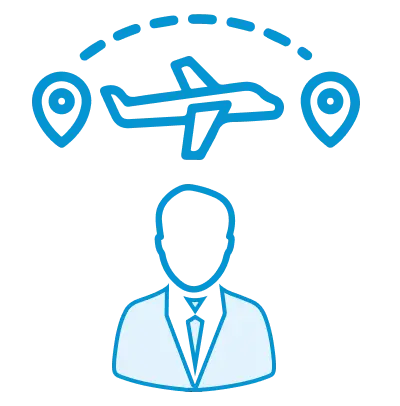Unable to find what you're searching for?
We're here to help you find itMD-100: Windows 10 Course Overview
Successfully delivered 93 sessions for over 308 professionals

Purchase This Course
USD
View Fees Breakdown
| Course Fee | 3,250 |
|
Total Fees |
3,250 (USD) |
USD
View Fees Breakdown
| Course Fee | 2,500 |
|
Total Fees |
2,500 (USD) |
USD
View Fees Breakdown
| Flexi Video | 16,449 |
| Official E-coursebook | |
| Exam Voucher (optional) | |
| Hands-On-Labs2 | 4,159 |
| + GST 18% | 4,259 |
|
Total Fees (without exam & Labs) |
22,359 (INR) |
|
Total Fees (with Labs) |
28,359 (INR) |
Select Time
Select Date
| Day | Time |
|---|---|
|
to
|
to |
♱ Excluding VAT/GST
You can request classroom training in any city on any date by Requesting More Information
Inclusions in Koenig's Learning Stack may vary as per policies of OEMs
Koenig Learning Stack
 Free Pre-requisite Training
Free Pre-requisite TrainingJoin a free session to assess your readiness for the course. This session will help you understand the course structure and evaluate your current knowledge level to start with confidence.
 Assessments (Qubits)
Assessments (Qubits)Take assessments to measure your progress clearly. Koenig's Qubits assessments identify your strengths and areas for improvement, helping you focus effectively on your learning goals.
 Post Training Reports
Post Training ReportsReceive comprehensive post-training reports summarizing your performance. These reports offer clear feedback and recommendations to help you confidently take the next steps in your learning journey.
 Class Recordings
Class RecordingsGet access to class recordings anytime. These recordings let you revisit key concepts and ensure you never miss important details, supporting your learning even after class ends.
 Free Lab Extensions
Free Lab ExtensionsExtend your lab time at no extra cost. With free lab extensions, you get additional practice to sharpen your skills, ensuring thorough understanding and mastery of practical tasks.
 Free Revision Classes
Free Revision Classes Join our free revision classes to reinforce your learning. These classes revisit important topics, clarify doubts, and help solidify your understanding for better training outcomes.
Inclusions in Koenig's Learning Stack may vary as per policies of OEMs
Scroll to view more course dates
♱ Excluding VAT/GST
You can request classroom training in any city on any date by Requesting More Information
Inclusions in Koenig's Learning Stack may vary as per policies of OEMs

Rajesh Gogia
As a professional corporate trainer with a deep understanding of various Microsoft technologies, I have gained extensive experience in designing, implementing, and administering training programs. My expertise includes Microsoft Azure Architecting, Designing, Planning, and Implementation, Azure Architect Certified, Azure DevOps, Microsoft 365, and Microsoft Exchange Solutions (Since 4.0 till Exchange Online), Microsoft Exchange Instant Messaging, LCS, OCS, Lync, SFB and Teams with Enterprise Voice Solution.
Technical Expertise on SMS, SCCM, MOM, SCOM, SharePoint (from WSS version till SharePoint Online).
Handling Azure Security, Cybersecurity, Microsoft Purview (Governance, Compliance) Solutions.
In Citrix, journey started from MetaFrame, then moved to Presentation Server, Password Manager, Access Gateway, Smart Access, XenApp, XenServer, CVAD (Citrix Virtual Apps and Desktop), Citrix ADC, Citrix DaaS Deployment and Administration, Citrix MCS, Citrix PVS, Citrix Virtual Apps and Desktops 7 Architect Design Solutions, Deploy and Manage Citrix ADC 13. X with Traffic Management. Handled Corporate trainings and deployments.
With a proven track record of success, I am skilled in developing customized training solutions that effectively meet the unique needs of clients. My passion for learning and dedication to staying up-to-date on the latest industry trends enables me to deliver training programs that are both informative and engaging.
Associated with Koenig since April-2002.


1. MD-101: Managing Modern Desktops "MD-100: Windows 10" provides an overview of Windows 10 operating system features and functionality, while "MD-101: Managing Modern Desktops" focuses on deployment, management, and security of modern desktops Read More
"MD-100: Windows 10" provides an overview of Windows 10 operating system features and functionality, while "MD-101: Managing Modern Desktops" focuses on deployment, management, and security of modern desktops. By taking both courses, users can gain a comprehensive understanding of Windows 10 and learn how to deploy, manage, and secure modern desktops effectively. This will lead to increased productivity, lower management costs, and improved security posture for their organization.
The MD-100: Windows 10 course is designed for IT professionals seeking to deepen their expertise in managing Windows 10 environments.
Gain proficiency in installing, configuring, and maintaining Windows 10 environments. Learn to manage authorization, storage, apps, security, troubleshooting, and support for a robust Windows 10 infrastructure.
Suggestion submitted successfully.
 Free Pre-requisite Training
Free Pre-requisite TrainingJoin a free session to assess your readiness for the course. This session will help you understand the course structure and evaluate your current knowledge level to start with confidence.
 Assessments (Qubits)
Assessments (Qubits)Take assessments to measure your progress clearly. Koenig's Qubits assessments identify your strengths and areas for improvement, helping you focus effectively on your learning goals.
 Post Training Reports
Post Training ReportsReceive comprehensive post-training reports summarizing your performance. These reports offer clear feedback and recommendations to help you confidently take the next steps in your learning journey.
 Class Recordings
Class RecordingsGet access to class recordings anytime. These recordings let you revisit key concepts and ensure you never miss important details, supporting your learning even after class ends.
 Free Lab Extensions
Free Lab ExtensionsExtend your lab time at no extra cost. With free lab extensions, you get additional practice to sharpen your skills, ensuring thorough understanding and mastery of practical tasks.
 Free Revision Classes
Free Revision Classes Join our free revision classes to reinforce your learning. These classes revisit important topics, clarify doubts, and help solidify your understanding for better training outcomes.
Inclusions in Koenig's Learning Stack may vary as per policies of OEMs






